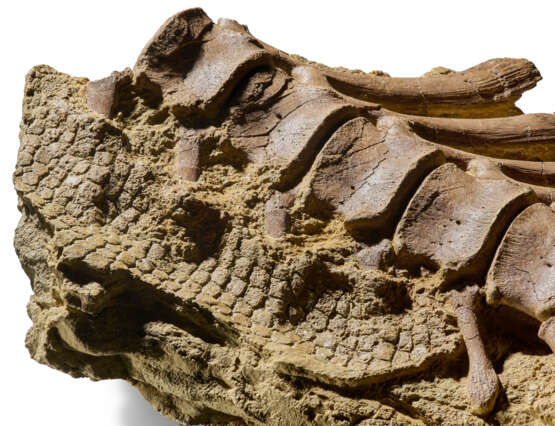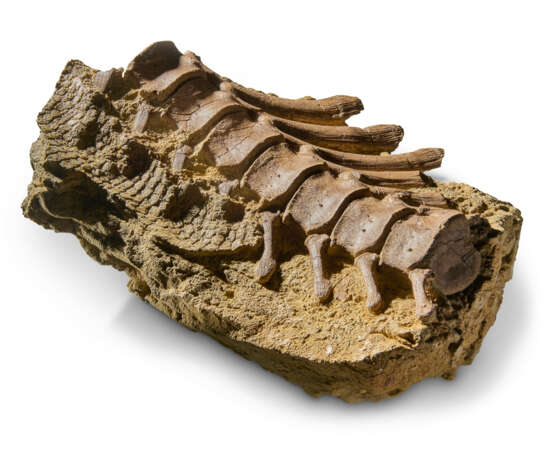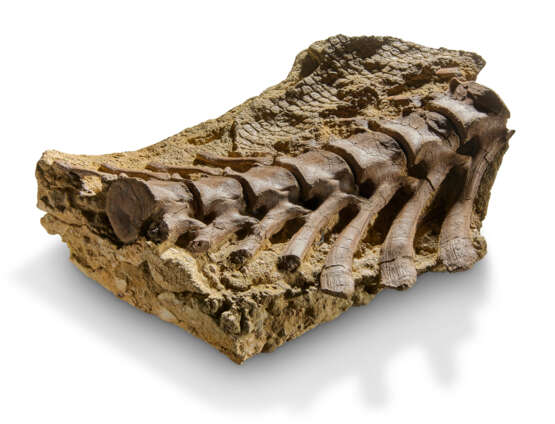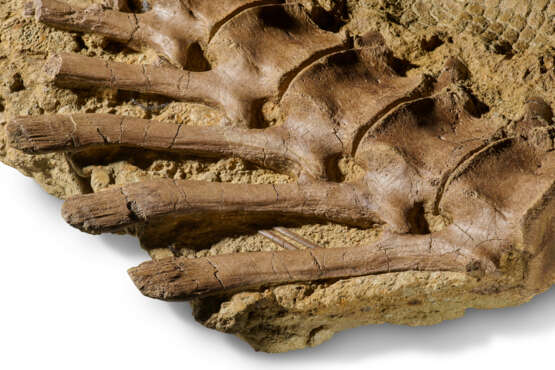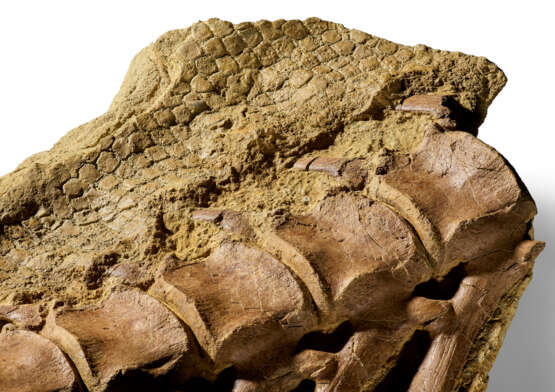ID 1353336
Lot 8 | A very rare survival of fossilised dinosaur skin and vertebrae
Estimate value
£ 60 000 – 90 000
From the Judith River Formation, late Cretaceous (81-78 million years ago), an impression of the scales and vertebrae of a Branchylophosaurus canadenis
23 x 161/2 x 6in. (58.5 x 42 x 15cm.)
Rare survival of dinosaur skin from the late Cretaceous period.
Brachylophosaurus (meaning 'short-crested lizard') was an unusual 36-feet long duck-billed dinosaur known for the distinctive flat, bony crest which sometimes covered its entire skull and gave it its name, and its mysteriously long arms. Almost all the dinosaur remains that survive the geological forces and time that enact upon them are bones and fragments of bones. For soft body parts such as skin to survive the fossilization process is rare, and provides us with a glimpse into the textural appearance of these mighty and long lost animals.
In sci-fi novel Raptor Red by paleontologist Robert T. Bakker, hadrosaurs including Brachylophosaurus kin are depicted as social creatures with intricate behavioural dynamics, drawing from scientific theories about their communication abilities and herd behaviour. Additionally, the Jurassic World games also feature Brachylophosaurus, allowing players to observe their social and environmental needs. Such portrayals draw on scientific hypotheses about hadrosaur communication, diet, and migration, allowing science fiction to imagine Brachylophosaurus as a sophisticated creature.
The present specimen was discovered at The Judith River Formation, a Late Cretaceous geologic formation in north-central Montana, which has one of the most diverse and best-preserved dinosaur faunas in the world. It is known for the exceptional specimens it has yielded, such as the mummified 'Leonardo' Brachylophosaurus, as well as for producing the first dinosaur remains ever found in North America. In 1855, whilst conducting a survey around the Upper Missouri River, geologist Ferdinand V. Hayden (1829-1887) came across many fossilized teeth and bones in what would later be known as the Judith River Formation.
| Address of auction |
CHRISTIE'S 8 King Street, St. James's SW1Y 6QT London United Kingdom | |
|---|---|---|
| Preview |
| |
| Phone | +44 (0)20 7839 9060 | |
| Buyer Premium | see on Website | |
| Conditions of purchase | Conditions of purchase |
